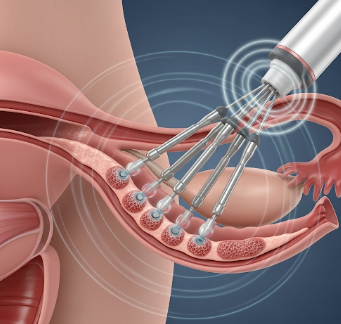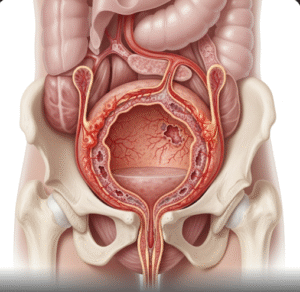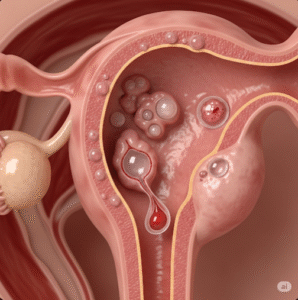Overview
Radio-frequency endometrial ablation (RFEA) is a minimally invasive procedure used to treat abnormal uterine bleeding by destroying the endometrial lining of the uterus using radio-frequency energy. This procedure is an effective alternative for women who do not respond to medication and wish to avoid hysterectomy.
South Korea offers advanced gynecologic centers with cutting-edge RFEA technology, experienced gynecologic surgeons, and comprehensive post-procedure care, ensuring safety, efficacy, and a smooth recovery.
What is Radio-frequency Endometrial Ablation?
RFEA involves using a specialized device to deliver radio-frequency energy to the endometrium, causing controlled destruction of the uterine lining. Key points include:
✔ Minimally invasive, usually performed through the cervix without abdominal incisions.
➔ Reduces heavy menstrual bleeding and improves quality of life.
● Typically performed under local, regional, or general anesthesia.
★ Preserves the uterus, making it an alternative to hysterectomy for suitable patients.
It is indicated for women with menorrhagia, fibroids, or abnormal uterine bleeding not caused by malignancy and who do not desire future fertility.
What are the Benefits?
RFEA provides several advantages:
✔ Significant reduction or cessation of menstrual bleeding.
➔ Minimally invasive with a short hospital stay or outpatient procedure.
● Rapid recovery and return to daily activities.
★ Lower complication rates compared to hysterectomy.
➤ Long-term effectiveness, with many patients achieving lasting improvement in symptoms.
Procedure Details
1) How should I prepare for Radio-frequency Endometrial Ablation?
Preparation ensures optimal safety and effectiveness:
✔ Medical assessment: Pelvic exam, ultrasound, and evaluation for uterine abnormalities.
➔ Medication review: Adjust anticoagulants or medications affecting bleeding.
● Pre-procedure instructions: Fasting if general anesthesia is planned.
★ Preoperative counseling: Discuss procedure, outcomes, possible risks, and post-procedure expectations.
➤ Screening for infection: Ensure no active pelvic infection prior to the procedure.
2) What happens during the RFEA procedure?
The procedure is performed in a gynecologic suite under anesthesia:
✔ Cervical access: A small device inserted through the cervix into the uterus.
➔ Radio-frequency energy delivery: Controlled ablation of the endometrial lining.
● Monitoring: Device ensures uniform tissue destruction and prevents excessive damage.
★ Procedure duration: Usually 15–30 minutes.
➤ Completion: Device removed, minimal bleeding expected, and patient moved to recovery.
Korean gynecologists emphasize precise device placement and uniform ablation to maximize symptom relief and minimize complications.
3) What happens after Radio-frequency Endometrial Ablation?
Post-procedure care focuses on recovery, symptom monitoring, and prevention of complications:
✔ Immediate recovery: Observation for 1–2 hours; mild cramping and spotting common.
➔ Pain management: Over-the-counter analgesics usually sufficient.
● Activity: Resume light daily activities within 24–48 hours; avoid heavy exercise for a few days.
★ Follow-up: Pelvic exam to assess healing and symptom improvement after 4–6 weeks.
➤ Long-term outlook: Most patients experience significant reduction in menstrual bleeding within 1–3 cycles.
Risks / Benefits
Possible Risks:
✔ Infection of the uterus or pelvic organs
➔ Uterine perforation (rare)
● Post-procedure cramping or bleeding
★ Fluid absorption complications (very rare)
➤ Incomplete symptom relief requiring repeat procedure or hysterectomy
Major Benefits:
✔ Minimally invasive alternative to hysterectomy
➔ Reduces or stops heavy menstrual bleeding
● Short procedure time and rapid recovery
★ Preserves uterus structure for women not seeking pregnancy
➤ Effective long-term symptom control in most patients
Recovery and Outlook
✔ Immediate recovery: Mild cramping, spotting, and fatigue for a few days.
➔ Activity: Resume work and light activity within 1–2 days; avoid strenuous activity for about a week.
● Symptom improvement: Noticeable reduction in bleeding within 1–3 menstrual cycles.
★ Long-term outcome: Most women achieve significant reduction or cessation of abnormal bleeding.
➤ Follow-up: Routine check-ups to monitor uterine health and address any complications.
When To Call the Doctor
Contact your doctor immediately if you notice:
✔ Fever, chills, or signs of infection
➔ Severe abdominal pain not relieved by medications
● Heavy bleeding or unusual discharge
★ Signs of uterine perforation (severe pain, dizziness)
➤ Persistent cramping or delayed symptom improvement
Best Korea Option / Process
South Korea provides expert RFEA services with:
✔ Leading hospitals: Samsung Medical Center, Asan Medical Center, Severance Hospital Gynecology.
➔ Experienced gynecologists specializing in minimally invasive uterine procedures.
● Advanced RFEA devices and imaging guidance for precise treatment.
★ Comprehensive care: Pre-op assessment, procedure, post-op monitoring, and follow-up.
➤ Medical tourism support: Translation, appointment coordination, and continuity of care for international patients.
✅ Highlights:
✔ RFEA is a minimally invasive procedure to reduce or stop abnormal uterine bleeding
➔ Short procedure, rapid recovery, and lower complication rates than hysterectomy
● Effective long-term symptom relief for most patients
★ Risks include infection, uterine perforation, cramping, and incomplete relief
➤ Korean hospitals provide expert surgeons, advanced devices, and comprehensive post-procedure care













